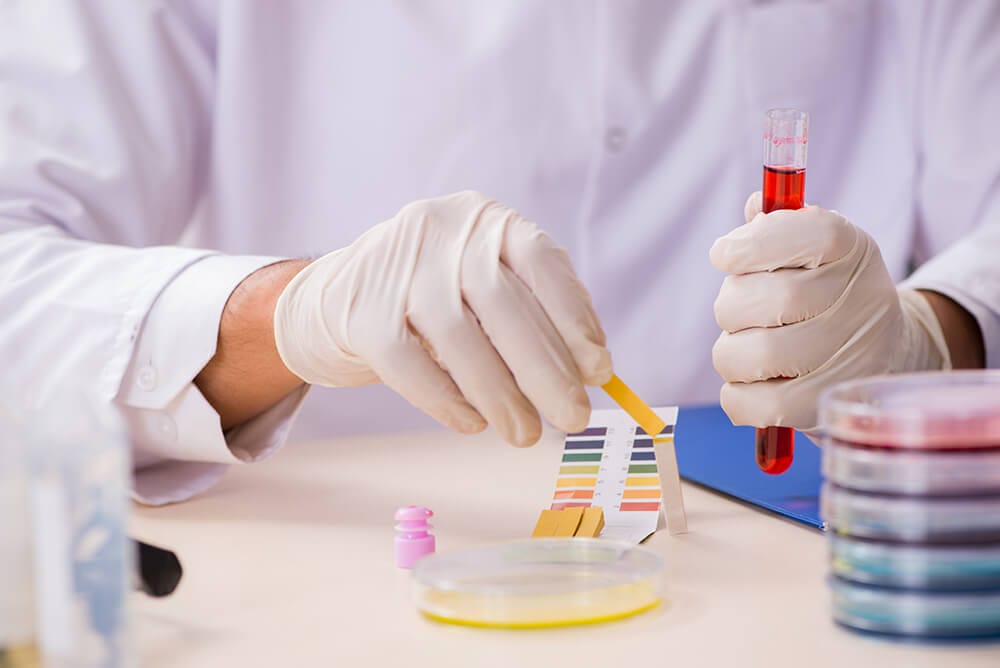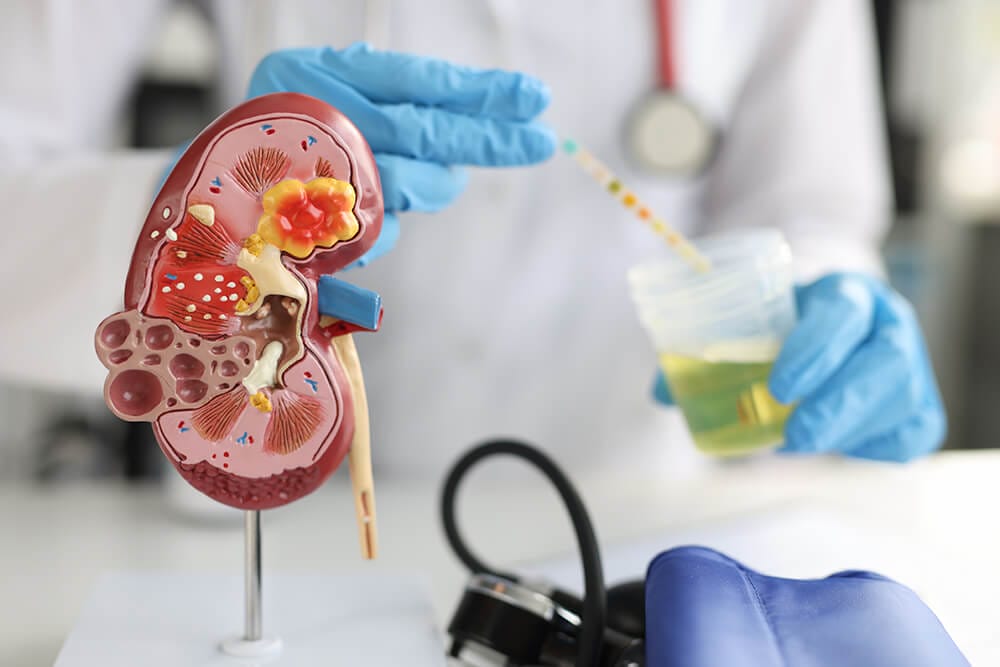
Normal Blood pH Range: pH Level Changes & Health Problems
Overview of pH value of blood
The blood performs many functions in the body. It helps in providing oxygen to the lungs, carrying out carbon dioxide from the lungs, transporting the waste materials to the proper excretory organs, and is also responsible for other essential cellular activities. All of these functions are carried out smoothly when the pH value of blood is within the normal range.
When the normal range of the blood pH is disturbed, it can be an indication of various health disorders, especially disorders of the lungs and kidneys, as these organs are important in regulating blood pH. The acid-base balance has to be maintained and that can be done with proper screening and by opting for a healthier lifestyle.
Normal blood pH level
The need to have the correct balance between acidity and alkalinity in the body helps the blood to maintain its pH value. This further helps the body stay healthy as any changes in this balance affect our organs. When the pH value of the blood is not maintained for a long time, it can lead to major damage to vital organs and our overall well-being.
The pH scale is from 0 to 14, with 0 being highly acidic and 14 being highly basic or alkalic. Water has a pH of 7, which makes it neutral. The normal blood pH range should be between 7.35 and 7.45. This indicates that blood is slightly basic in nature. The need for blood to be basic is because most of the processes involved in bodily functions are acidic in nature and the basic pH of blood helps stabilize the processes and conducts effective transportation.
Testing of blood pH level
When symptoms are observed that indicate a change in the pH levels of blood, tests are required to understand the nature and degree of change. This helps in diagnosing the problem and opting for the best treatment. There are mainly two types of blood tests that help in determining the pH level of human blood:
-
- Arterial blood gas or ABG tests are used to measure the levels of carbon dioxide and oxygen in the blood, along with the acidity of the blood. The blood is drawn from the radial artery, as arterial blood provides the test results prior to the blood’s entry into the body tissues.
- Electrolyte panel tests are done to check the levels of electrolytes in the blood and if there are any imbalances related to the normal electrolyte levels. Electrolytes carry out nerve functions and help maintain the acid-base balance. This test checks for minerals and salts like bicarbonate, potassium, or sodium. The blood is collected from the veins.
Symptoms of blood pH level changes
As mentioned above, the pH of blood is slightly basic. When the blood becomes too acidic or too basic, it can lead to several disorders. While tests can help identify the cause, the need to prescribe the test will depend upon the symptoms displayed by the person. Often a change in the acid-base balance can itself be a symptom of other ailments. Hence, doctors often ask for the acid-base tests as part of many major panel and screening tests.
When an acid-base disorder occurs, it can be detected by observing the following symptoms:
-
- Nausea
- Headache
- Fatigue
- Lethargy and drowsiness
- Shortness of breath
- Fever
- Muscle spasms
- Mood swings and irritability
Causes of blood pH level changes
The lungs and kidneys play a vital role in maintaining blood pH levels. When a disorder of the kidneys or lungs occurs, it leads to metabolic or respiratory changes, respectively. These changes affect the blood pH balance. When the change in the pH happens in one direction, mechanisms are set in motion that help restore balance. Factors that lead to an acid-base imbalance are:
-
- Stress – Stress causes the adrenaline in the body to be high and people who stress often are at a high risk of suffering from acidity, which also causes an acid-base imbalance.
- Improper breathing technique – Regulated breathing helps keep the pH of blood balanced. When the body is not inhaling the correct amount of oxygen, the blood can become acidic, as oxygen helps keep the blood more alkalic.
- Toxins – The consumption of chemically enhanced foods can contribute to making the body highly acidic in nature.
- A diet that is highly acidic – Having too much caffeine, trans fat, sugar, or refined flour is considered to be a diet that is highly acidic. This further creates an imbalance in the blood pH level.
- Infections – Contracting an infection means the body is being made more acidic to become suitable for the pathogen to thrive. Recent cases of infections mean that the person has acidic blood.
Chemical buffers like carbonic acid and bicarbonate anion too help maintain the acid-base balance in the body. The need for chemical buffers is crucial, as having a blood pH lower than 6.8 or higher than 7.8 can lead to death.
Health problems related to blood pH level change
The acid-base imbalance can also be part of the symptoms that are seen in other health conditions. When doctors ask for panel tests that include a check for the blood pH, they want to determine the cause for the condition. Certain conditions—genetic or otherwise—can lead to a higher acidic or basic blood formation in the body. When acid starts to accumulate within the body, it affects the organs and the protective linings within them. Many researches have linked the imbalance of blood pH to various other health conditions.
These health conditions are:
-
- Diabetic ketoacidosis
- Kidney disorders
- Allergies
- Bronchitis
- Cardiovascular disease
- Dementia
- Fibromyalgia
- Arrhythmias
- High blood pressure
- Hormonal imbalance
- Lou Gehrig’s disease
- Multiple sclerosis
- Parkinson’s disease
- Sinusitis
Acidosis of blood pH level
When the pH of the blood becomes more acidic in nature, it is known as acidosis. There are two types of acidosis:
-
- Respiratory acidosis occurs when the lungs are not able to get rid of excess carbon dioxide, which then builds up in the body. Early symptoms include headaches and drowsiness. People suffering from Guillain-Barre Syndrome, muscular dystrophy, chronic obstructive pulmonary disease, or people who overuse opioids usually have respiratory acidosis.
- Metabolic acidosis occurs when the body is unable to remove excess acid or goes into overproduction of acids. Symptoms of metabolic acidosis include nausea, vomiting, and fatigue. People who suffer from metabolic acidosis overdose on aspirin or antifreeze, have dehydration, diarrhea, kidney disorders, or some metabolic disorders.
Alkalosis of blood pH level
Alkalosis occurs when the body has too much base or bicarbonate that makes the blood more basic than normal. There are two types of alkalosis:
-
- Respiratory alkalosis occurs when the person is breathing too deeply or is undergoing hyperventilation. This removes more carbon dioxide than required. Symptoms often include anxiety, pain, and twitching of the muscles. People who suffer from panic attacks are more prone to suffer from respiratory alkalosis.
- Metabolic alkalosis occurs when acid is removed in an excessive amount from the body through vomiting or due to overactive adrenal glands. Symptoms include muscle spasms, irritability, and tingling sensation around toes and lips.
Role of kidneys in maintaining blood pH level
Kidneys help keep the blood pH level at the required amount. This is done by regulating the reabsorption or elimination of acids and bases as per the body’s requirement. When the kidneys work properly, the renal system makes the required adjustments to the absorption of bicarbonates or the addition of hydrogen ions to the urine.
Treatment of blood pH level changes
The treatment of an imbalance in the blood pH level depends on the type of imbalance that has occurred. Ideally, the lungs and the kidneys help to restore the balance, but, in case of damage to either, medications have to be considered. Acidosis treatment includes—the addition of sodium bicarbonate intravenously or orally, insulin therapy for diabetic cases, and renal health medications. Alkalosis treatments include—electrolyte infusion into the body, avoiding diuretics, controlling hyperventilation, and oxygen therapy.
Conclusion
The pH of blood should be in balance to ensure the proper functioning of all organs. The blood circulates throughout the body and performs many functions. The pH level should remain within the normal range of being slightly basic, that is between 7.35 to 7.45. Opting for regular check-ups and maintaining a healthy lifestyle will help keep the pH levels in check and can also help with the early detection of conditions that affect the acid-base balance.
FAQs
What are healthy acidic foods?
While food rich in acids should be avoided, acidic food is required to help maintain an optimum pH level. The healthy alternatives include kidney beans, black beans, oats, cold-pressed oils, unsalted nuts, and honey.
Can pH balance be restored naturally?
When there are no underlying diseases that cause the imbalance, then opting for a healthy and organic lifestyle will lead to having balanced pH levels naturally.
Can sleep apnea cause pH issues?
Yes, sleep apnea can cause respiratory acidosis, as the body stops breathing for some time, leading to chronic lung disorders
References

















